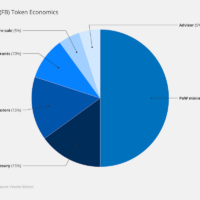Since China expelled miners in the summer of 2021, North America has undoubtedly become the computing hub securing the bitcoin network.
While some may argue that this migration brings the same likelihood of centralization risk because the hashrate just moved from one place to another, the drastically different political landscape in the U.S. and Canada has helped shape a more distributed power capacity for mining.
For this reason, we have visualized a mining power capacity distribution map in North America based on the region’s most recent financial statements and investor presentations of public mining companies.
The data comes from 20 public companies and 2 private operators: Argo, Applied Digital, Bitdeer, Bitfarms, Bit Mining, Cipher, CleanSpark, Core Scientific, Digihost, Galaxy Digital, Greenidge, Griid, HIVE, Hut8, Iris Energy, Marathon, Mawson, NYDIG, Riot, Rhodium, Stronghold and Terawulf.
The data of these companies was mostly as of December 2023 with some as recent as February 2024. They added up to 5.42 gigawatts (GW) in total self-mining and hosting capacity. That accounts for about 28% of the network’s total capacity as estimated by the revised Cambridge Bitcoin Electricity Consumption Index.
As for the geographical distribution, while the states of Texas and Georgia are taking the top two spots, many other states and provinces also accounted for significant shares. To put things into perspective, we would point out that prior to China’s crackdown in 2021, Xinjiang alone was said to have 2 GW of mining capacity.
This map will be updated approximately every six months based on filings of public mining companies. If you think we are missing any notable data points, please email us at [email protected]











Share This Post: